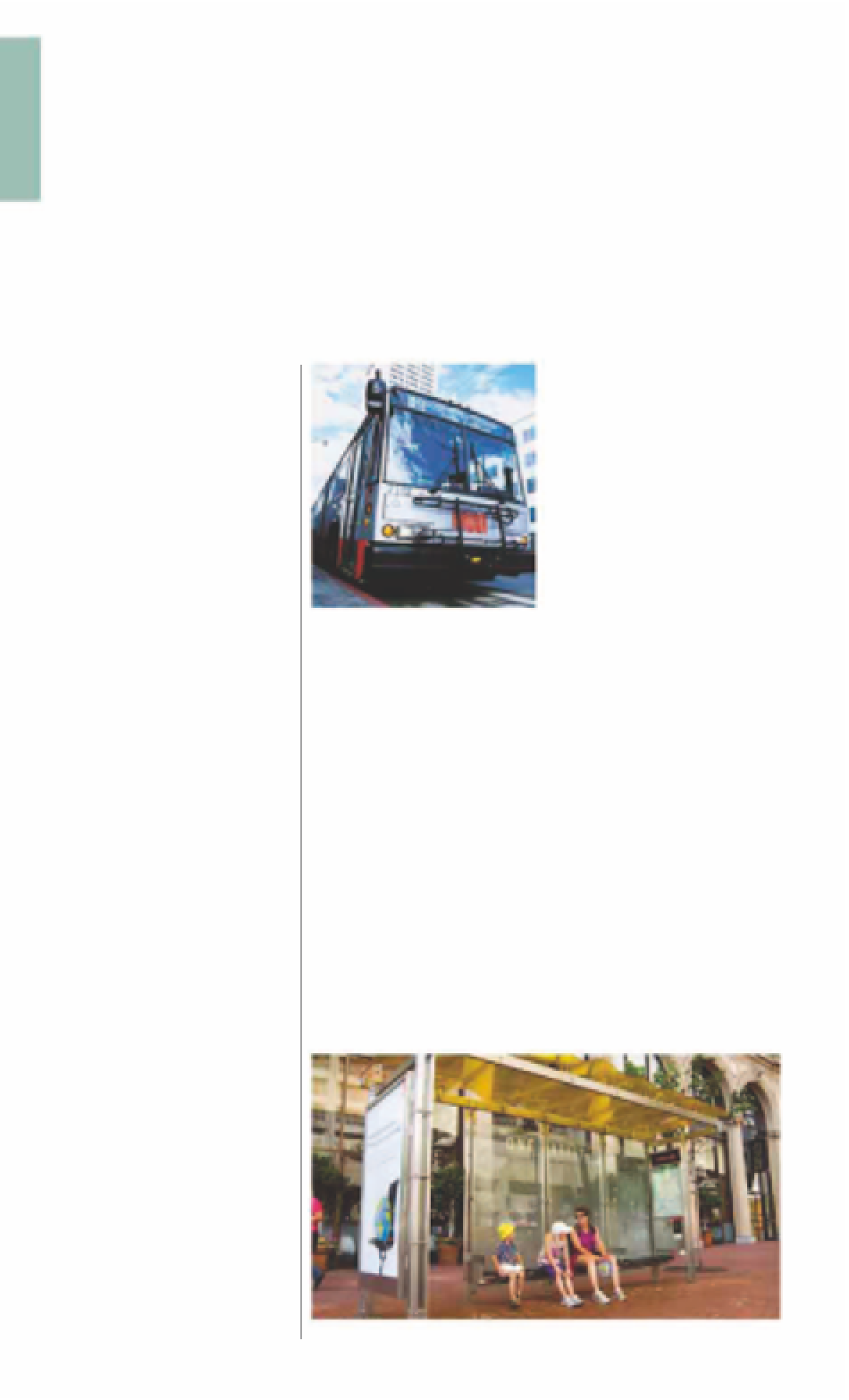Travel Reference
In-Depth Information
Traveling by Bus and Muni
Metro Streetcar
San Francisco Municipal Railway, or Muni as it is commonly
called, is the organization that runs the city's public
transportation system. You can use one interchangeable
pass - Muni Passport - to travel on Muni buses, Muni Metro
streetcars (electric trams), and the cable car lines, which are
mainly used by tourists
(see pp284-5)
. Buses and streetcars
serve most tourist attractions and all neighborhoods. Using
the bus and streetcar map on the inside back cover, and a
Muni Passport, you can ride the city's public transportation all
day at a fraction of the cost of car rentals and parking fees.
especially at those stops that
are located at islands in the
middle of the street.
The route number and name of
the destination are shown on
the front and side of every bus,
near the front door. Route
numbers that are followed by
a letter (L, X, AX, BX, etc.) are
either express services or make
limited stops. Ask the driver if
you are not sure where the bus
stops. Some lines offer a Night
Owl Service (midnight-6am),
but taxis
(see p289)
are often the
safest means of getting around
after dark.
Fares and Tickets
Buses and streetcars both cost
$2 per ride. When paying your
fare, you can request a free
transfer, which will allow you
to change to another bus or
streetcar without paying an
additional fare. The transfer is
valid for 90 minutes.
If you are planning to make
a number of trips by Muni,
a Muni Passport, valid for 1, 3, or
7 days, allows unlimited travel
on buses, streetcars, and cable
cars ($15-$29). Muni Passports
are available at many stores and
information kiosks throughout
the city, including the kiosk at
SFO, and at the
Visitor
Information Center
.
The Clipper card is a
convenient payment option,
and is accepted on all Muni
services. This electronic pre-pay
card can be bought on the
SFMTA
website, as well as at
Muni metro stations. Hold it
against the reader at station
gates or when boarding a
vehicle and the exact fare is
automatically deducted.
Bus Stops
Bus stops are indicated by signs
displaying the Muni logo or by
yellow bands on poles. Route
numbers of buses that stop
there are listed below the sign
and on the exterior wall of the
shelter. Most bus shelters now
have digital signs showing
which routes are running and
when the next bus will arrive.
Route maps and service
frequency guides are posted
inside most bus shelters.
Route numbers are displayed on the front
and side of the bus
bus, so be prepared to give
up your seat.
Smoking, drinking, eating, and
playing music are prohibited on
buses. Guide dogs for the blind
can ride for free at any time;
other animals may be allowed
at certain times of day, at the
driver's discretion.
To indicate that you want to
get off at the next stop, pull the
cord that runs along the
windows. A “Stop Requested”
sign will light up. Instructions
about how to open the doors
are posted near the exit. Look
carefully for oncoming traffic
when alighting from the bus,
Using Streetcars
Streetcars operate both above
and below ground. Streetcar
lines J (Church), K (Ingleside), L
(Taraval), M (Ocean View), N
(Judah), and T (Third) all share
the same tracks, which run
beneath Market Street. So if
you intend to catch a streetcar
at a Market Street station, it is a
good idea to check the letter
and name of the one you are
about to board to avoid taking
the wrong line.
Using Buses
Buses stop only at designated
bus stops, every two or three
blocks. On boarding, put the
exact change in the fare box, or
show your Muni Passport to the
driver. Ask your driver to let you
know when you are near your
destination, and watch the sign
above the driver's head, which
will flash the name of the next
stop. Senior citizens and
disabled passengers have
priority at the front of the
Muni bus shelter, with glass walls and a digital timetable

































